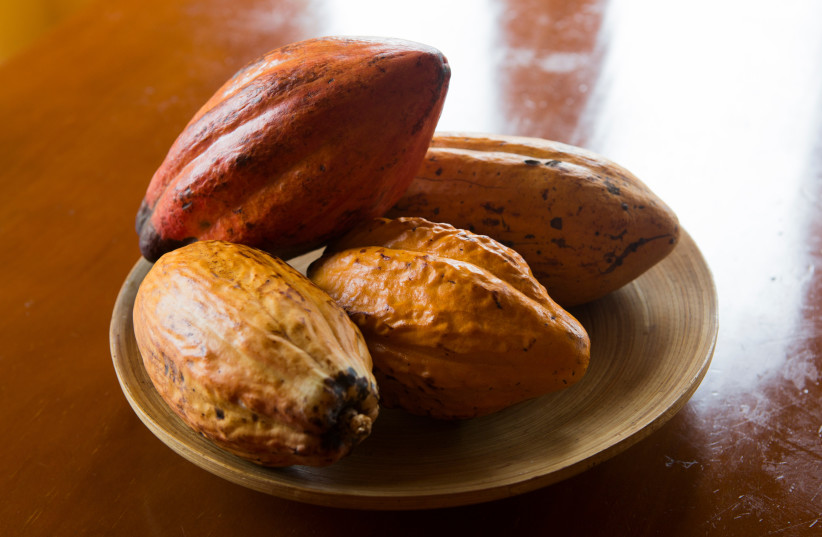About 50% of the world’s chocolate comes from cacao trees in the West Africa countries of Ivory Coast and Ghana. Many of them are dying out from a quickly spreading virus spread by mealybugs that threatens the health of the trees and the dried seeds from which chocolate is made, jeopardizing the global supply of the world’s most popular treat.
For many people, chocolate is a sweet delight. Its main components are cocoa mass and cocoa butter that are extracted from the cocoa fruit. What is less known, however, is that the cocoa fruit contains additional valuable ingredients that have been underused until now.
As the world races towards a more circular and sustainable economy, innovative technologies in the food sector are required. Food utilization needs to be maximized so that associated environmental burdens can be reduced. This is particularly important for foods with higher environmental impacts, such as cocoa products.
Maximum use
Researchers at the public university ETH in Zurich have joined forces with the chocolate industry to investigate the potential for making maximum use of the cocoa fruit, which would increase the profitability of cocoa cultivation while making chocolate a healthier indulgence.
Prof. Erich Windhab and his team worked together with a start-up named Koa – dedicated to sustainable cocoa fruit cultivation, and Swiss chocolate manufacturer Felchlin to develop a recipe for cocoa-fruit chocolate.
Kim Mishra, main author of the prestigious journal Nature Food study entitled “Valorization of cocoa pod side streams improves nutritional and sustainability aspects of chocolate,” said that the cocoa fruit is similar to the honeydew melon.

“These fruits have similar structures. Both have a hard outer shell that reveals the flesh of the fruit when cut open, as well as the cocoa beans or melon seeds and pulp in the interior.” Conventional chocolate makes use only of the beans, but the researchers were able to use the flesh and parts of the fruit shell (the endocarp) for their cocoa-fruit chocolate recipe. They processed it into powder and mix it with part of the pulp to form cocoa gel. This gel substance is extremely sweet and can replace the added powdered sugar that is normally part of the chocolate experience.
However, it was not easy for the team to find the perfect recipe for cocoa-fruit chocolate. They systematically tested the texture of various compositions in the lab. Too much fruit juice extracted from the pulp made for a clumpy chocolate, but too little resulted in an insufficiently sweet product. The research team tried to find the perfect balance between sweetness and texture.
The clumping problem doesn’t arise when using powdered sugar. The experiments showed that chocolate may contain up to 20% of gel, which is equal to the sweetness of chocolate with 5% to 10% powdered sugar. In comparison, conventional dark chocolate can easily contain between 30% and 40% powdered sugar.
To test the sensory experience of the new recipes, trained panelists from Bern University of Applied Sciences taste-tested pieces of chocolate weighing five grams each, with some containing various amounts of powdered sugar and others containing the new variety sweetened with cocoa gel. “This allowed us to empirically determine the sweetness of our recipe as expressed in the equivalent amount of powdered sugar,” said Mishra.
By using cocoa gel as a sweetener, cocoa-fruit chocolate boasts a higher fiber content than your average European dark chocolate (15 grams versus 12 grams per 100 grams). It also contains only 23 grams of saturated fat as opposed to the usual 33 grams. This means that ETH researchers were able to increase the fiber content by around 20% while cutting the saturated fat by around 30%. “Fiber is valuable from a physiological perspective because it naturally regulates intestinal activity and prevents blood sugar levels from rising too rapidly when consuming chocolate. Saturated fat can also pose a health risk when too much is consumed. There’s a relationship between increased consumption of saturated fats and increased risk of cardiovascular diseases,” Mishra explained.
Small-scale farmers can diversify their product offerings and increase their income if other components of the cocoa fruit can be marketed for chocolate production instead of just the beans – and if most of the fruit can be used to produce cocoa-fruit chocolate, only the shell that is traditionally used as fuel or composting material remains. “This means that farmers can not only sell the beans, but also dry out the juice from the pulp and the endocarp, grind it into powder and sell that as well,” he added. “This would allow them to generate income from three value-creation streams, and more value creation for the cocoa fruit makes it more sustainable.”
This doesn’t mean that cocoa-fruit chocolate will be hitting grocery stores soon, however. “Although we've shown that our chocolate is attractive and has a comparable sensory experience to normal chocolate, the entire value creation chain will need to be adapted, starting with the cocoa farmers, who will require drying facilities,” Mishra concluded.
But the first step has been taken: ETH has filed a patent for its cocoa-fruit chocolate recipe. The development of cocoa-fruit chocolate is a promising example of how technology, nutrition, eco-compatibility and income diversification for small farmers can all work in tandem to improve the entire value-creation chain of the cocoa plant.
